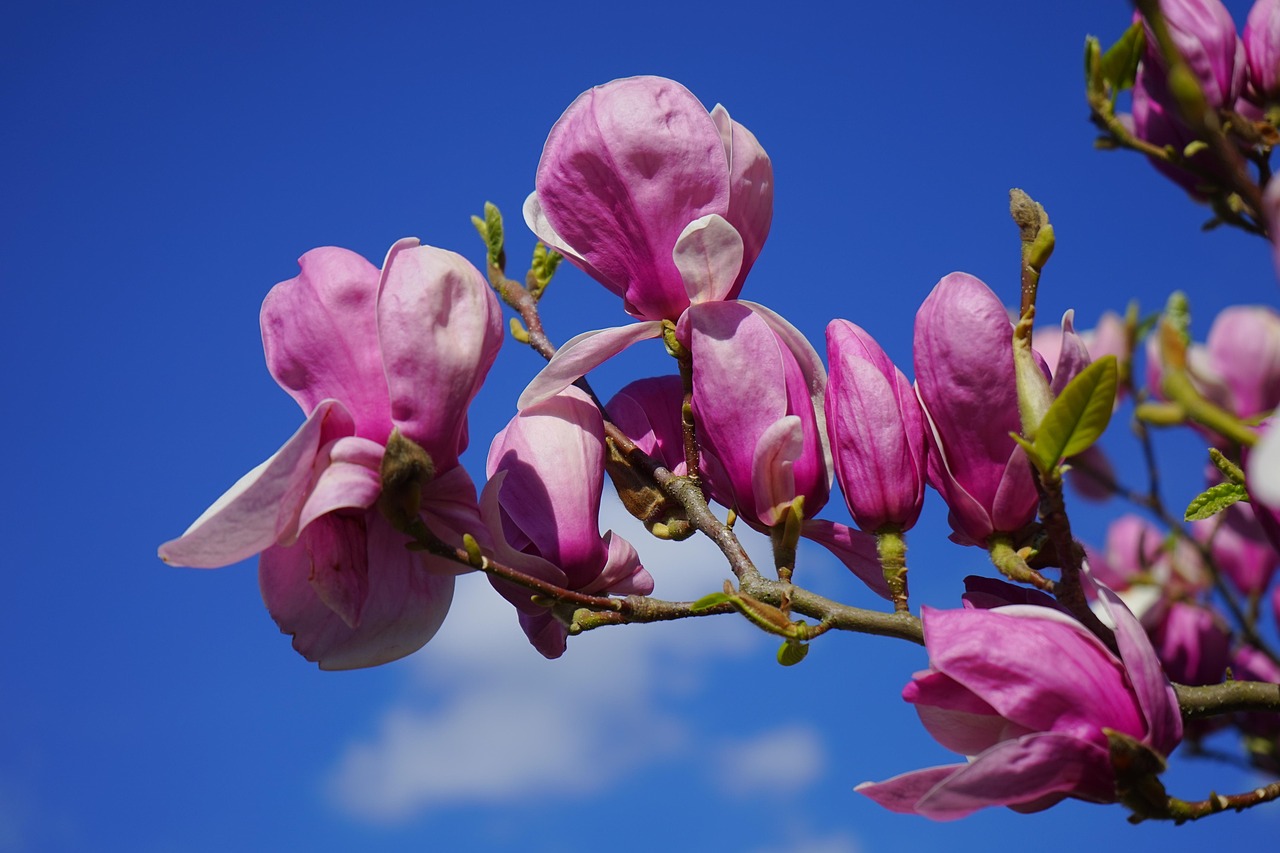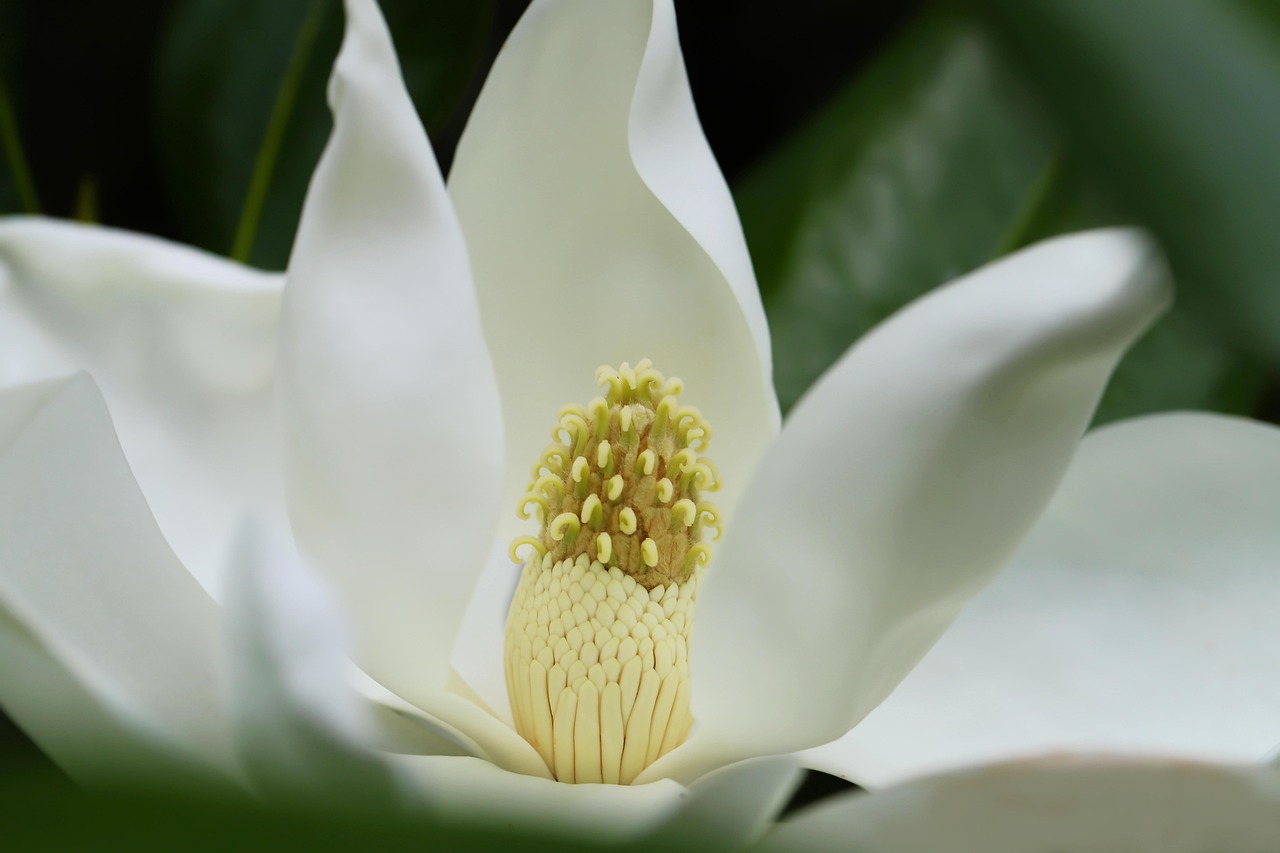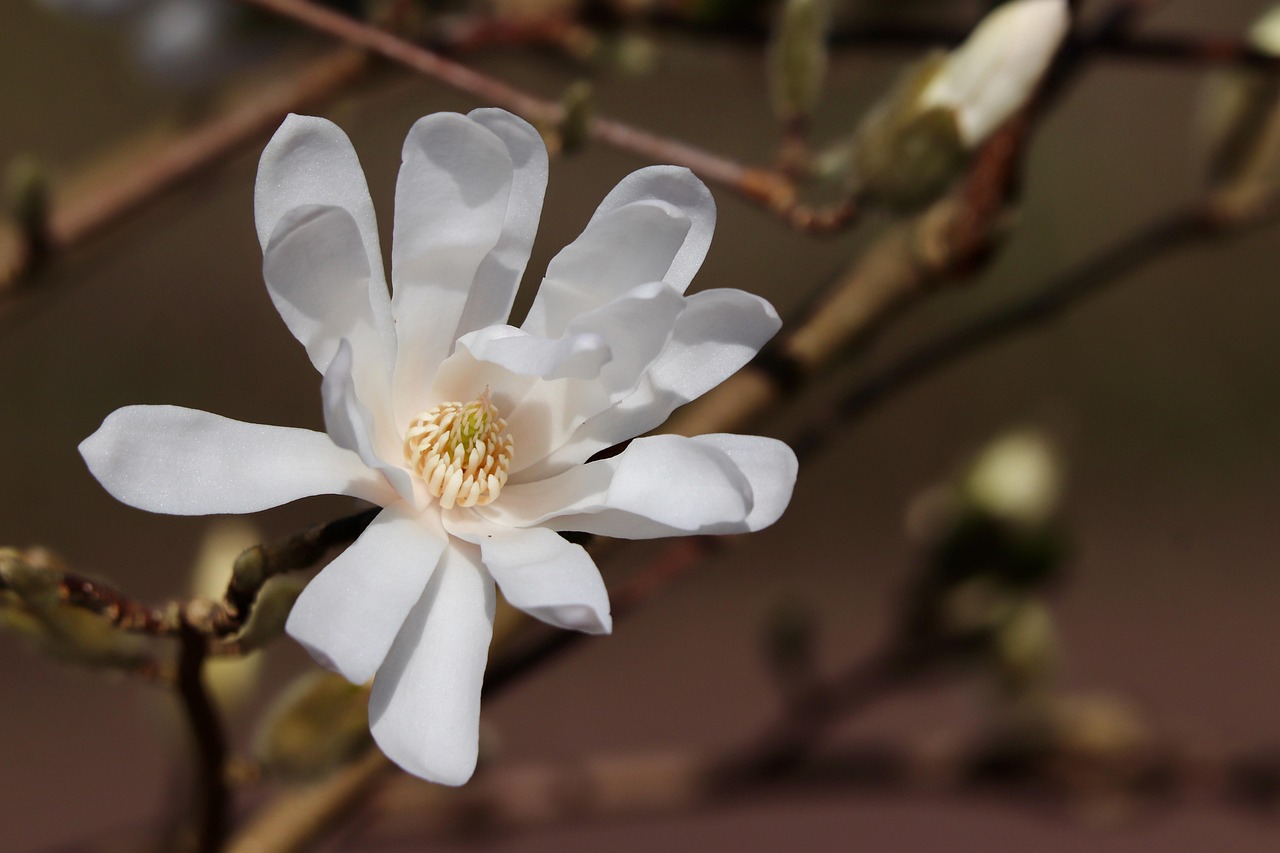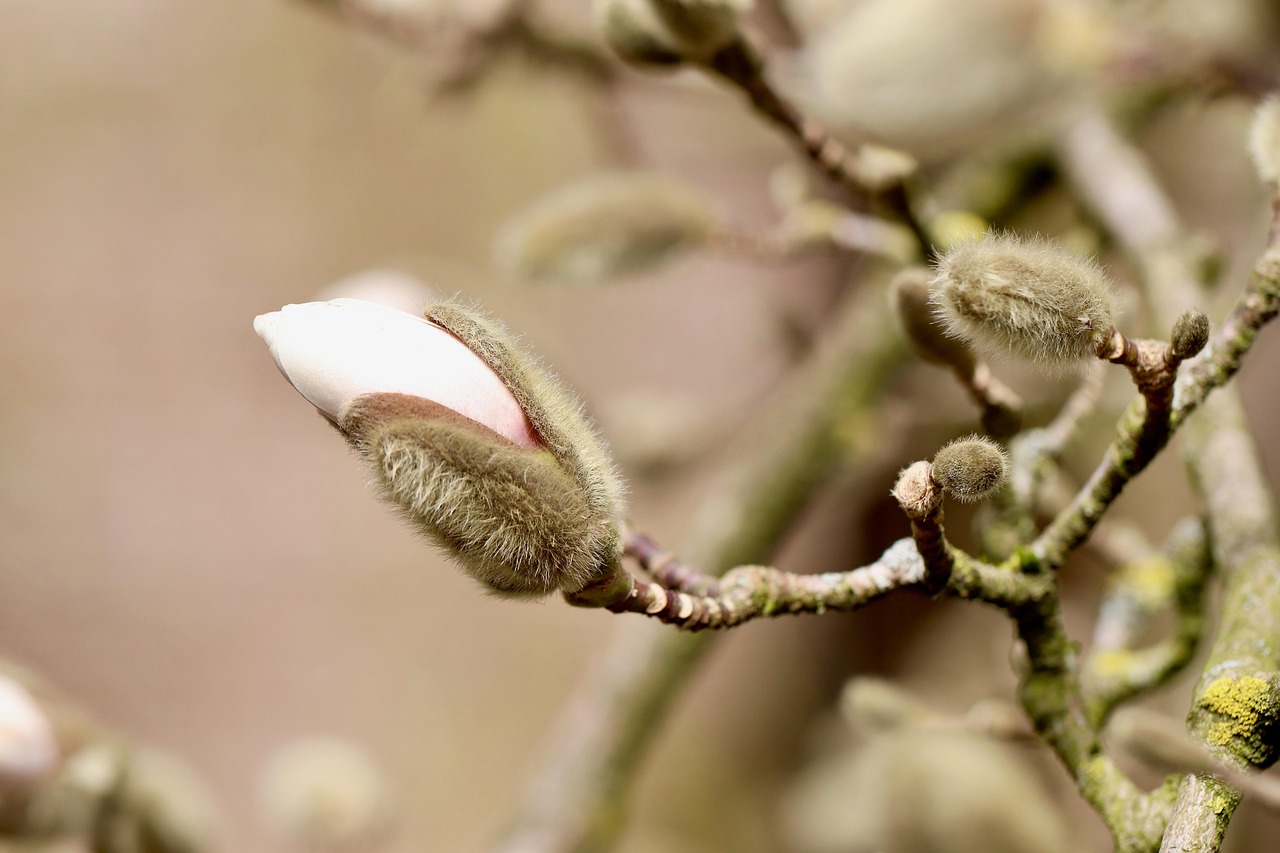The fastest-growing magnolia tree is the Southern Magnolia (Magnolia grandiflora), which can grow up to 2 feet per year under optimal conditions. Other quick-growing varieties include the Saucer Magnolia (Magnolia x soulangeana) and the Star Magnolia (Magnolia stellata), both of which are popular for their stunning blooms.
Magnolia trees are known for their beautiful flowers and glossy leaves. They belong to the Magnoliaceae family and are popular in gardens and landscapes due to their striking appearance and fragrant blossoms. Though many magnolia species are slow-growing, some varieties can grow relatively quickly, making them appealing choices for gardeners who want to establish shade or ornamental trees in a shorter time frame.
When selecting a fast-growing magnolia, it is essential to consider factors like climate, soil type, and space availability. Different species thrive in various conditions, so understanding the specific needs of each variety is crucial for successful growth. Below, we explore some of the fastest-growing magnolia varieties along with their characteristics.
Popular Fast-Growing Magnolia Varieties

Several magnolia species are recognized for their rapid growth rates. Here are a few of the most notable varieties:
- Southern Magnolia (Magnolia grandiflora): This evergreen tree can reach heights of 60 feet or more. It produces large, fragrant white flowers and thrives in warm climates.
- Saucer Magnolia (Magnolia x soulangeana): Known for its stunning pink and white blooms, this deciduous tree grows up to 25 feet tall and is popular in temperate regions.
- Star Magnolia (Magnolia stellata): A smaller tree that typically reaches 15-20 feet, the Star Magnolia has star-shaped white flowers and is suitable for smaller gardens.
- Cucumber Tree (Magnolia acuminata): This large deciduous tree can grow up to 80 feet tall. It features yellow-green flowers and is known for its adaptability.
Each of these species offers unique characteristics that appeal to different preferences. Below is a table summarizing key information about these fast-growing varieties.
| Variety | Height | Flower Color | Growth Rate |
|---|---|---|---|
| Southern Magnolia | 60+ feet | White | Fast (up to 2 feet/year) |
| Saucer Magnolia | 25 feet | Pink/White | Moderate (up to 1-2 feet/year) |
| Star Magnolia | 15-20 feet | White | Moderate (up to 1-2 feet/year) |
| Cucumber Tree | 80 feet | Yellow-Green | Fast (up to 2 feet/year) |
Choosing the right magnolia tree depends not only on growth rate but also on the aesthetic appeal and suitability for the local environment. Fast-growing varieties can provide quick landscaping solutions and add beauty to any garden.
Additionally, planting conditions significantly impact the growth rate of magnolia trees. These trees prefer well-drained soil and adequate sunlight. Regular watering during dry spells can also enhance growth. It is important to note that while these varieties are labeled as fast-growing, individual growth rates can vary based on environmental factors.
Understanding the characteristics of these magnolia varieties will help you make an informed decision when planning your garden or landscape design. Each species brings its own charm, making them valuable additions to any outdoor space.
Growing Conditions for Fast-Growing Magnolias
To ensure that your fast-growing magnolia trees thrive, it is important to provide the right growing conditions. These trees have specific requirements that can significantly influence their growth rates. Understanding these factors will help you create an ideal environment for your magnolia trees.
Soil Requirements
Magnolia trees prefer well-drained, fertile soil. The following points highlight the soil preferences for optimal growth:
- Drainage: Good drainage is critical. Magnolia roots are sensitive to waterlogged conditions. Ensure that the soil allows excess water to drain away effectively.
- pH Level: Magnolias thrive in slightly acidic to neutral soils, with a pH level ranging from 5.5 to 7.0. Conduct a soil test to determine pH and amend the soil if needed.
- Organic Matter: Adding organic matter, such as compost, can improve soil fertility and structure. This addition enhances moisture retention and provides essential nutrients.
Light Requirements
Magnolia trees require adequate sunlight to flourish. Here are some key considerations regarding light:
- Full Sun: Most magnolia species prefer full sun, which means they need at least six hours of direct sunlight daily. Full sun promotes better flowering and overall health.
- Partial Shade: Some varieties can tolerate partial shade but may not bloom as profusely. Consider the specific needs of the variety you choose when selecting a planting location.
Watering Needs
Proper watering is vital for the establishment and growth of magnolia trees. Consider the following guidelines:
- Regular Watering: Newly planted magnolias need consistent moisture. Water them deeply once a week during dry periods, especially in the first year after planting.
- Avoid Overwatering: While magnolias enjoy moisture, they do not tolerate soggy conditions. Ensure that the soil dries out slightly between waterings.
- Mulching: Applying a layer of mulch around the base of the tree can help retain soil moisture and regulate temperature.
Pest and Disease Management
Like all plants, magnolia trees are susceptible to various pests and diseases. Monitoring and managing these issues is essential to maintain healthy growth.
Common Pests
The following pests may affect magnolia trees:
- Aphids: These small insects can cause damage by sucking sap from leaves. They often cluster on new growth. Regularly check for signs of aphid infestation and treat with insecticidal soap or neem oil.
- Scale Insects: Scale can appear as small bumps on branches and leaves. They can weaken the tree by feeding on sap. Control measures include horticultural oils or insecticidal sprays.
- Spider Mites: These tiny pests thrive in hot, dry conditions and can cause leaf discoloration. Increasing humidity around the tree or treating with appropriate miticides can help control infestations.
Common Diseases
Several diseases can impact magnolia trees, including:
- Crown Gall: This bacterial infection causes abnormal growths on roots and stems. Prevention involves proper planting techniques and avoiding injury to roots.
- Leaf Spot: Fungal leaf spots can occur due to excessive moisture or poor air circulation. Improving air flow through pruning can help reduce incidence.
- Root Rot: Caused by overwatering or poorly drained soil, root rot leads to wilting and death of the tree. Ensuring proper drainage is crucial for prevention.
Pruning Techniques for Magnolias
Pruning is an important practice that helps maintain the shape and health of magnolia trees. Proper pruning encourages strong growth and can enhance flowering.
When to Prune
The best time to prune magnolia trees depends on the type:
- Deciduous Varieties: Prune these during late winter or early spring before new growth begins. This timing helps minimize stress on the tree.
- Evergreen Varieties: Light pruning can be done in late spring after flowering has finished. Avoid heavy pruning as it may affect flowering in subsequent years.
Pruning Techniques
The following techniques are effective for pruning magnolias:
- Remove Dead or Diseased Wood: Start by eliminating any dead or diseased branches to promote overall health.
- Avoid Topping: Do not top your magnolia tree, as this can lead to weak growth and a less attractive shape.
- Selectively Thin Branches: Thin crowded branches to improve air circulation and light penetration, which enhances overall health and flowering potential.
By understanding and implementing these growing conditions, pest management strategies, and pruning techniques, you can successfully cultivate fast-growing magnolia trees in your landscape. Each step plays a vital role in ensuring that these beautiful trees thrive and add value to your outdoor space.

Choosing the Right Location for Your Magnolia Tree
Location is a critical factor in the successful growth of magnolia trees. Selecting an appropriate site will contribute to their health and longevity. Here are some important considerations when choosing a location for planting your magnolia.
Space Requirements
Magnolia trees can vary significantly in size, so understanding their space requirements is essential:
- Height and Spread: Ensure that you have adequate vertical and horizontal space for the mature size of the tree. For instance, Southern Magnolias can reach up to 80 feet tall and spread out significantly.
- Clearance from Structures: Plant magnolias away from buildings, power lines, and other structures to avoid future conflicts as they grow. A distance of at least 15-20 feet is often recommended.
- Consider Neighboring Plants: Be mindful of existing plants. Ensure your magnolia has enough room to grow without competing for sunlight or nutrients.
Climate Considerations
Understanding the climate of your region is essential when selecting a magnolia variety:
- Hardiness Zones: Most magnolias thrive in USDA hardiness zones 5 to 10. Check the specific hardiness zone of your area to select an appropriate variety.
- Temperature Extremes: Some magnolias, like the Southern Magnolia, are more suited to warmer climates, while others like the Star Magnolia can tolerate cooler temperatures.
- Humidity Levels: Magnolias generally prefer humid environments. If you live in a dry area, you may need to provide additional watering or consider planting in a location with higher moisture levels.
Propagation Methods for Magnolias

Propagating magnolia trees can be an exciting and rewarding experience. There are several methods to propagate these lovely trees, each with its own advantages.
Seed Propagation
Seed propagation is a common method for growing magnolias from scratch:
- Collecting Seeds: Gather seeds from ripe magnolia cones in late summer or early fall. The seeds are typically red or pink and can be found within the cone.
- Stratification: Magnolia seeds require stratification, which mimics winter conditions. Place seeds in a damp paper towel and refrigerate them for about 30 days before planting.
- Sowing Seeds: Plant the seeds in a well-drained potting mix. Keep the soil moist and place the pots in a location that receives indirect sunlight. Germination can take several weeks to months.
Cutting Propagation
Cuttage is another effective way to propagate magnolia trees:
- Selecting Cuttings: Choose healthy stems from the current season’s growth. Ideally, cuttings should be around 6-8 inches long with several leaves remaining.
- Treating Cuttings: Dip the cut end in rooting hormone to promote root development before planting them in a pot filled with a moist, well-draining medium.
- Caring for Cuttings: Cover the pots with plastic bags or a humidity dome to maintain moisture. Place them in a warm, bright area but avoid direct sunlight. Roots should develop in several weeks.
Grafting Techniques
Grafting is another propagation method often used for specific magnolia varieties:
- Choosing Rootstock: Select a compatible rootstock that will support the grafted variety. This method helps ensure that the new plant will thrive and exhibit desired characteristics.
- Making the Graft: Use techniques such as whip-and-tongue grafting or side-veneer grafting. Proper alignment of cambium layers is crucial for successful grafting.
- Caring for Grafted Plants: After grafting, protect the graft site with grafting tape and ensure proper watering and care as the plant establishes itself.
Common Uses for Magnolia Trees
Magnolia trees offer various practical uses and aesthetic benefits in landscaping. Here are some popular applications:
Landsacaping Features
Magnolias are often used as focal points or landscape features due to their stunning blooms and attractive foliage:
- Specimen Trees: Many gardeners plant magnolias as specimen trees in yards or gardens, showcasing their unique beauty.
- Shade Trees: Larger magnolia varieties can provide ample shade, making them ideal for planting near patios or outdoor seating areas.
- Mixed Borders: Incorporating magnolias into mixed borders with other flowering plants enhances visual interest throughout the growing season.
Cultural Significance
In addition to their aesthetic value, magnolias hold cultural significance in many regions:
- Symbolism: In various cultures, magnolias symbolize purity and dignity. They are often associated with renewal and beauty, making them popular choices for special occasions.
- Cultural Festivals: Many regions celebrate magnolia festivals during blooming seasons, attracting visitors who appreciate these stunning trees.
The versatility of magnolia trees makes them not only beautiful additions to gardens but also valuable plants with cultural and environmental significance. Understanding how to propagate, care for, and utilize these trees will enhance your gardening experience.
Environmental Benefits of Magnolia Trees

In addition to their beauty and cultural significance, magnolia trees provide numerous environmental benefits. Planting these trees can positively impact both local ecosystems and urban landscapes.
Air Quality Improvement
Magnolia trees play a vital role in improving air quality. They contribute to cleaner air by:
- Absorbing Carbon Dioxide: Magnolias, like all trees, absorb carbon dioxide during photosynthesis, helping to reduce greenhouse gas levels in the atmosphere.
- Releasing Oxygen: Through the same process, they release oxygen, which is essential for all living organisms.
- Filtering Pollutants: The foliage captures dust, smoke, and other pollutants, contributing to better air quality in urban areas.
Biodiversity Support
Magnolia trees also support biodiversity in several ways:
- Habitat for Wildlife: These trees provide shelter and nesting sites for various birds and small mammals. Their flowers attract pollinators like bees and butterflies, promoting ecosystem health.
- Food Sources: The seeds of magnolia trees are a food source for birds and other wildlife, supporting local fauna.
Soil Conservation
The root systems of magnolia trees help prevent soil erosion. By stabilizing the soil, they contribute to maintaining healthy landscapes. Here are some additional benefits:
- Soil Structure Improvement: The organic matter from fallen leaves enriches the soil, enhancing its structure and fertility.
- Water Retention: Healthy magnolia trees can help improve water retention in the soil, benefiting surrounding plants and reducing the need for irrigation.
Magnolia Varieties for Different Landscapes
While fast-growing magnolia varieties are popular, it’s essential to consider various options based on specific landscapes and needs. Here are some magnolia varieties suited for different applications:
Small Gardens
For smaller spaces, consider these compact varieties:
- Star Magnolia (Magnolia stellata): This small tree offers beautiful white flowers and grows well in smaller gardens, reaching heights of 15-20 feet.
- Saucer Magnolia (Magnolia x soulangeana): Known for its stunning blooms, this variety reaches around 25 feet tall, making it suitable for limited spaces.
Larger Properties
If you have more space, consider planting these larger magnolias:
- Southern Magnolia (Magnolia grandiflora): This majestic evergreen can grow up to 80 feet tall and provides a lush look with its glossy leaves and fragrant flowers.
- Cucumber Tree (Magnolia acuminata): A tall tree that can reach up to 80 feet, it features unique yellow-green flowers and is suitable for larger landscapes.
Final Thoughts
Choosing the right magnolia tree involves understanding the growth rates, environmental needs, and aesthetic appeals of various species. Fast-growing magnolias like the Southern Magnolia, Saucer Magnolia, and Star Magnolia offer beauty and quick establishment in gardens.
The environmental benefits of these trees cannot be overlooked. They contribute to air quality improvement, support local biodiversity, and help conserve soil. With proper care, including appropriate planting conditions, pest management, and pruning techniques, magnolias can thrive in diverse landscapes.
As you plan your landscape design or garden project, consider incorporating both fast-growing and established magnolia varieties. Their stunning blooms and lush foliage will enhance your outdoor space while providing valuable environmental benefits.
By understanding the characteristics and requirements of different magnolia species, you can create a beautiful and sustainable environment that showcases the unique charm of these magnificent trees. Whether you seek quick growth or long-term beauty, magnolias can be a perfect fit for your landscape.
